May 1, 2023
A private production space that creates a natural environment to evoke the human senses.
_project: Oatmeal Factory
_architecture: JSPA Design
_location: Ningwu, China
Architecture is not just about creating physical structures, but also about designing spaces that elicit specific sensory experiences. A building's design can influence our senses of sight, sound, touch, taste, and smell, and ultimately affect our emotional and physiological responses. The use of natural light and colors, for example, can create a sense of calm and relaxation, while the sound of flowing water can create a peaceful atmosphere. Similarly, the texture and material of a building can influence our sense of touch and create a sense of warmth or coolness. Ultimately, architecture can be a powerful tool for creating immersive and memorable experiences for humans.
When designing the Oatmeal Factory project, the studio JSPA Design intended to incorporate natural elements to create a space that engages the human senses. The architect responsible for the project, Florent, shared how his team created an introverted building that recreated a natural environment, with the ground floor made totally opaque to create a peaceful and calming atmosphere. Natural light is provided by patios or larger courtyards planted with local vegetation.
The project was also designed to engage the human senses. JSPA Design team created space sequences that played with scale, brightness, and material contrasts to provoke surprises to the visitor. The visitor is carried through an organized promenade, exploring the space slowly and discovering the factory's machinery at the end only. Meanwhile, employees experience an efficient organization focused on production.
The main entrance of the Oatmeal Factory is particularly impressive. The visitor passes through a sequence of brick walls that are not intelligible from their point of view, enters a very wide space where water flows and trees are growing, and climbs two flights of stairs before finally reaching the reception/coffee area. The outdoor walls and flooring are all made of local grey brick, while the indoor part is made of red brick with red cement joints, creating a different atmosphere.
The project was designed to have a positive impact on the people who use it. The architect's team deliberately freed a space in front of the building to let it open to the public and proposed a quality architectural landscape that the local community could access. Today, the space is being used by people for activities like Tai Chi and playing with the water pools, bringing new quality spaces and contributing to the improvement of the local environment. The Oatmeal Factory project showcases how architecture can create spaces that engage the human senses and positively impact the people who use them.
credits
_written by Daniela Moreira Silva
_film by Architecture Hunter & Schran Images
_cover image by Schran Images
_drawings by JSPA Design:
2F Floor Plan
3F Floor Plan
Implantation
Section 01
Section 02
Section 03
Section 04
Elevations
Detail
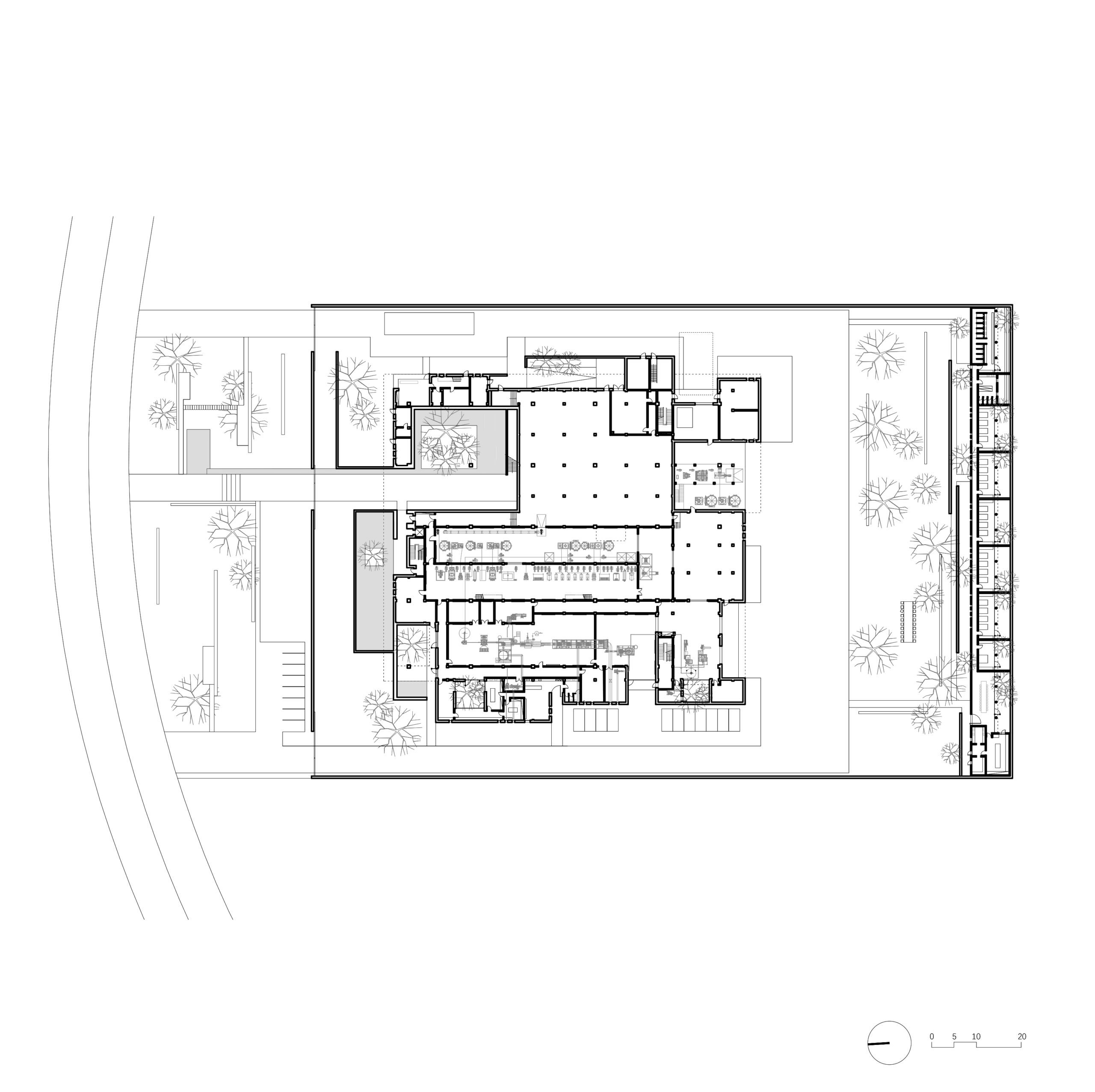
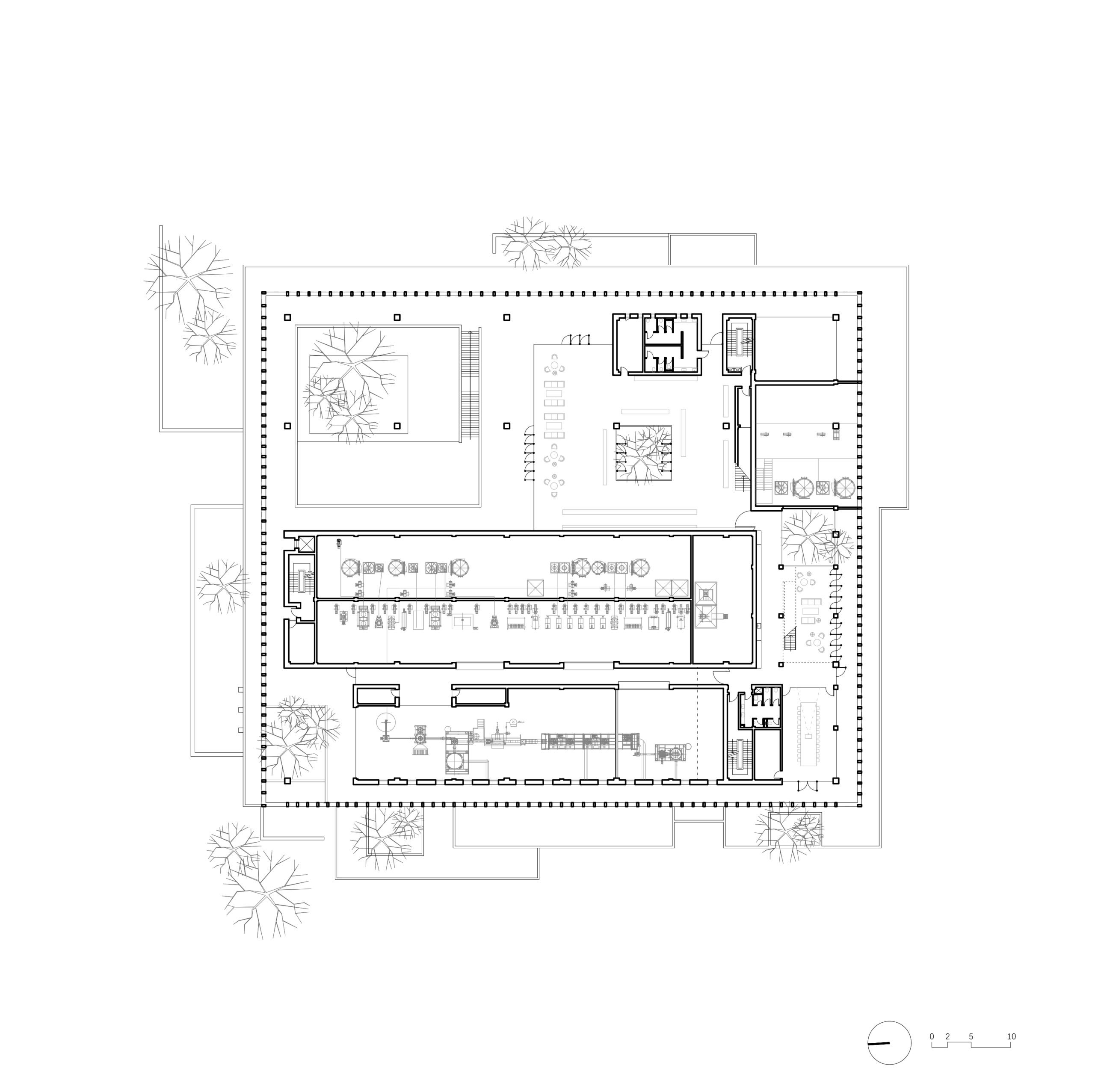
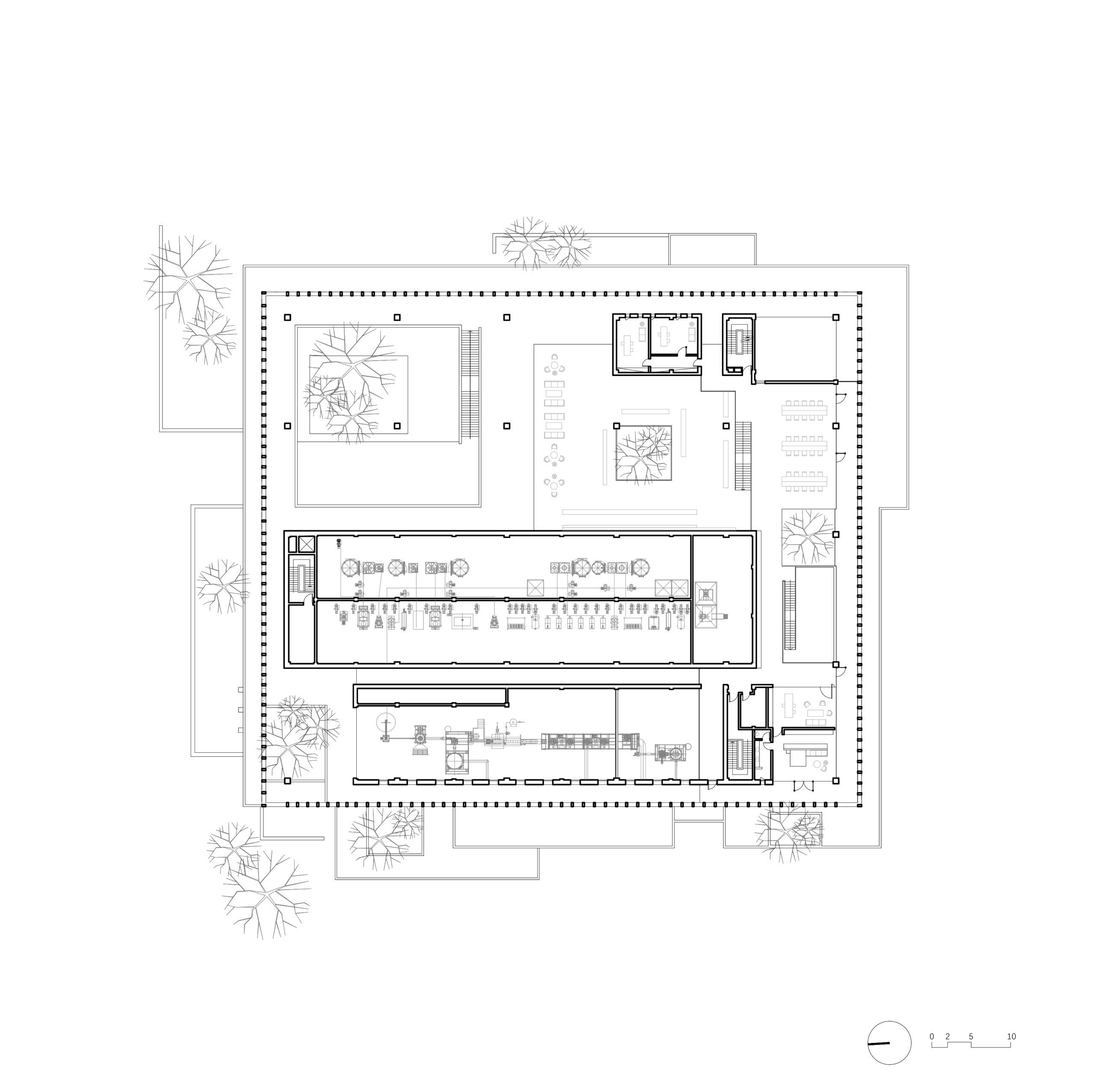
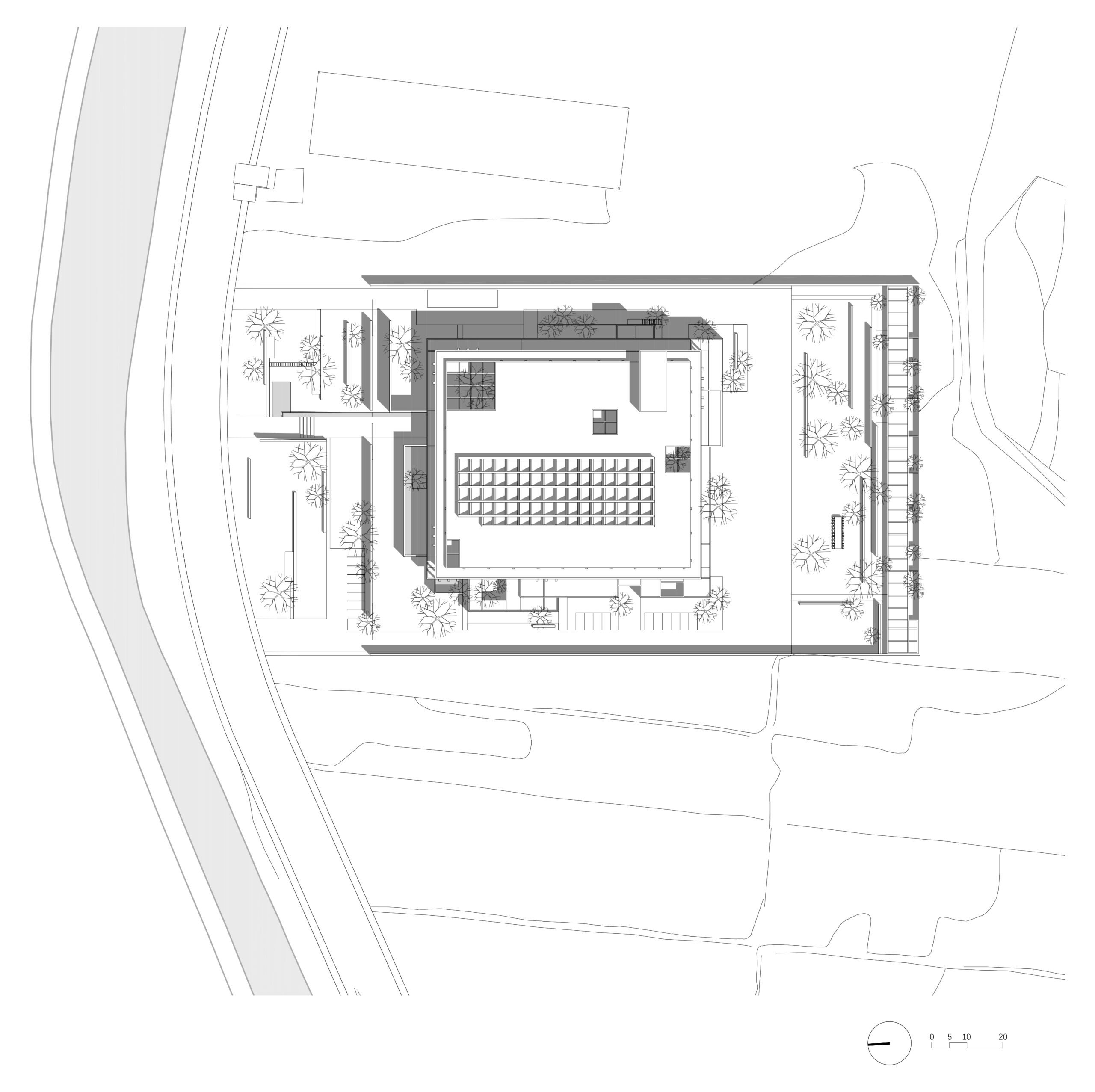



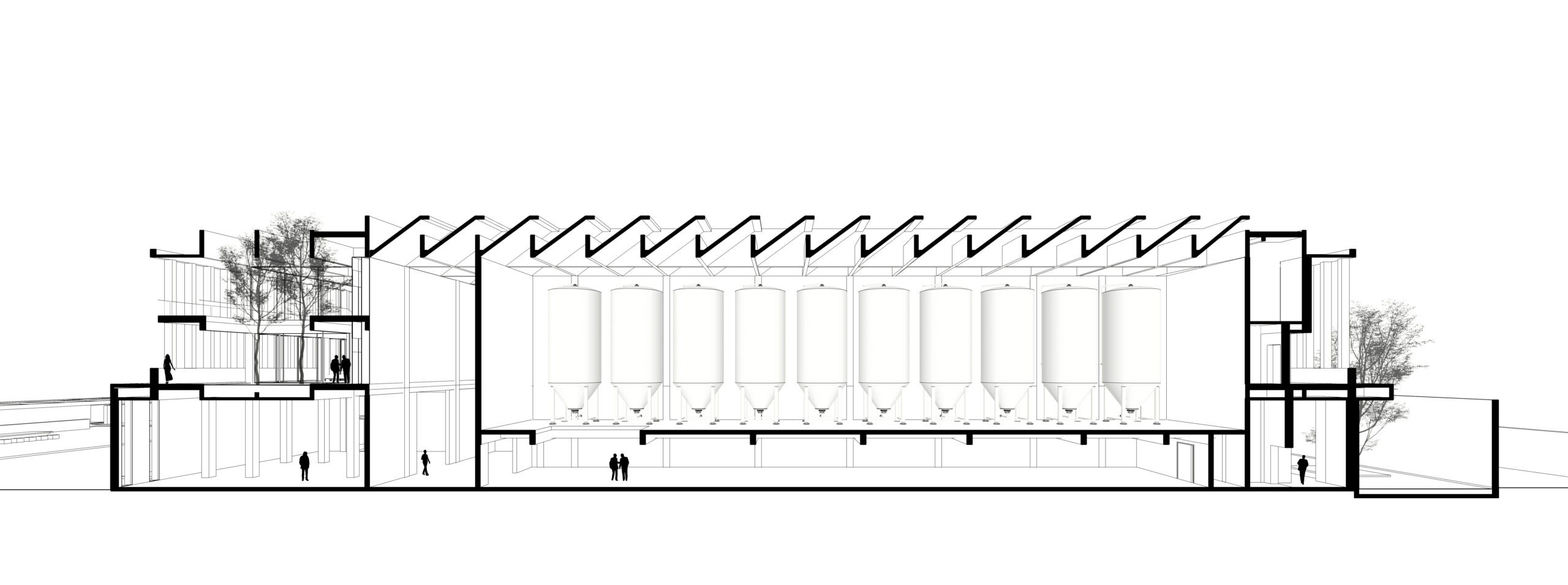


You’ve prove to be a great hunter. Now that you have reached the bottom, maybe it’s time to know us more.